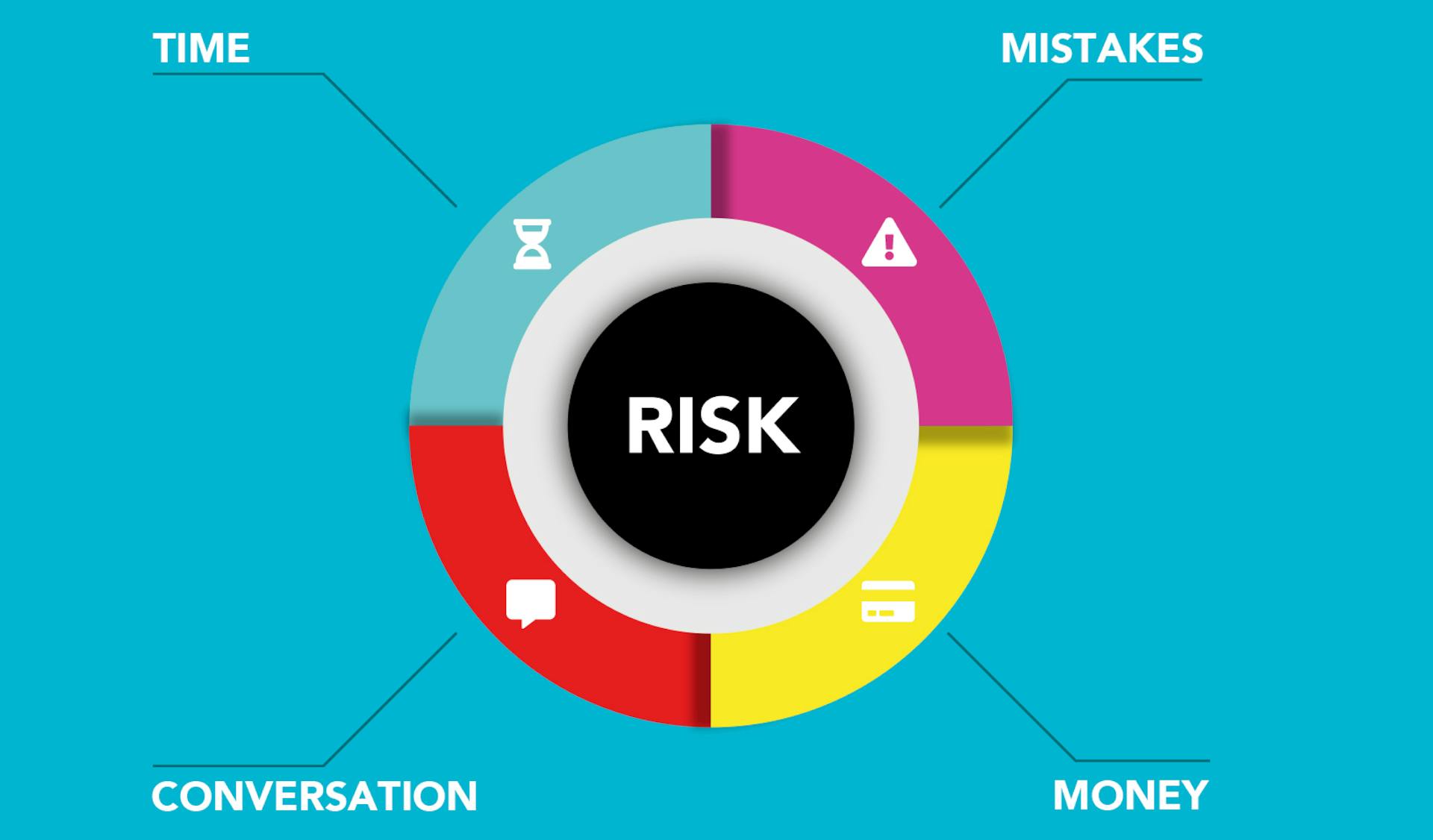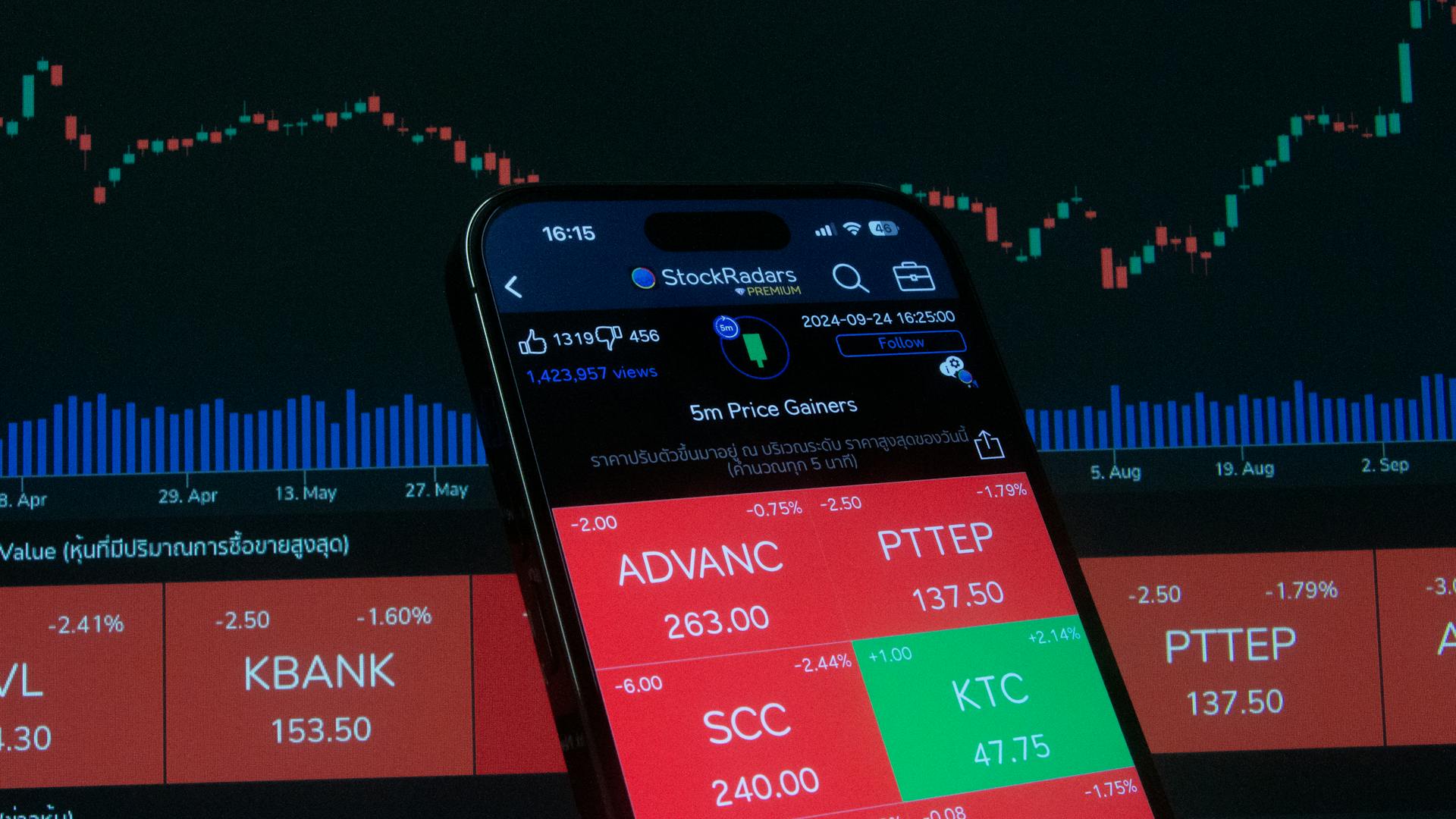
Expected shortfall and Value-at-Risk (VaR) are two popular risk metrics used to measure the potential loss of a portfolio.
VaR is a widely used risk metric that estimates the potential loss of a portfolio with a given probability over a specific time horizon.
Expected shortfall, on the other hand, measures the average loss of a portfolio exceeding the VaR threshold.
In other words, expected shortfall is a more comprehensive risk metric that takes into account the severity of losses beyond the VaR threshold.
Worth a look: Expected Shortfall
Value at Risk (VaR)
Value at Risk (VaR) is a measure of risk that tries to predict the maximum possible loss over a given holding period within a fixed confidence level. It's often used in finance to estimate the potential losses of a portfolio.
VaR has some limitations, though. For example, it can ignore critical information about the tails of the underlying distributions, which means it may not accurately capture extreme price movements. This is a problem because VaR only measures the distribution quantile, disregarding severe losses beyond the VaR level.
A different take: Var Cvar
Let's consider an example: two hedge funds have the same 1-day 95% VaR of $100. However, the first fund has its losses limited to $105, while the second fund has no downside protection and can lose even more than $500. Both funds have the same VaR, but their risk is very different.
VaR is a measure of risk that tells you the maximum amount of money you could lose with a certain level of confidence. But it doesn't consider how much you could lose beyond that maximum amount. This is where Expected Shortfall comes in.
Here's a summary of the key features of VaR:
- Definition: Maximum possible loss over a given holding period within a fixed confidence level
- Limitations: Ignores critical information about the tails of the underlying distributions, may not accurately capture extreme price movements
- Example: Two hedge funds with the same 1-day 95% VaR of $100, but very different risk profiles
Limitations and Risks
Expected Shortfall and Value at Risk (VaR) are both widely used risk measures, but they have their limitations and risks. Expected Shortfall is always a larger number than VaR because it's the average of losses that exceed the VaR.
One of the main limitations of both VaR and Expected Shortfall is that they heavily rely on the underlying model for the loss distribution. This model can take different forms, such as historical data or derivatives of the normal distribution. However, these models may have limitations, particularly in accurately capturing tail risks.
Explore further: Like Distribution vs Rollover
For instance, when using the normal distribution, tail risks may be underestimated. On the other hand, historical data may not be an ideal representation of future data points, particularly along the tails of a distribution. To ensure the accuracy of the risk measurement, the model assumptions made when using VaR and ES should be carefully considered.
Both VaR and ES are only capable of quantifying a subset of the risks faced by financial institutions. Other risks, such as liquidity, operational, and model risk, must also be considered when evaluating overall risk exposure.
Intriguing read: What to Expect When Getting a Crown?
Comparison and Conclusion
Regulators rely heavily on VAR, but expected shortfall has its advantages, making it a popular choice among financial institutions for internal risk measurement.
Expected shortfall is easier to calculate than VAR, especially when dealing with portfolios where individual loans default independently. This simplifies the calculations and provides a more accurate picture of risk.
The normal distribution may appear to be as risky as the t model when using VAR at a 95% or 97.5% confidence level. However, this can be misleading, as the t model's higher risk in the tails is only apparent at a 99% confidence level or above.
See what others are reading: Calculating Expected Shortfall
Expected shortfall, on the other hand, reflects the risk in the tails of the t model even at lower values of α. This makes it a more reliable measure of risk than VAR.
The ratio of expected shortfall to VAR, ESα/VaRα, has been studied for its asymptotics as α approaches 1. For the normal distribution, this ratio approaches 1, but for the t distribution with more than 1 degree of freedom, it approaches a value greater than 1.
Here's an interesting read: Expense Ratio vs Management Fee
Frequently Asked Questions
What is the expected shortfall in simple terms?
Expected shortfall is the average loss a fund can expect to incur when it experiences a significant downturn, beyond its predicted risk level. It's like a "worst-case scenario" loss, calculated from the most extreme 5% of potential outcomes.
What is the difference between VaR and ETL?
VaR focuses on potential losses at a specific threshold, while ETL provides a more comprehensive assessment by measuring average losses beyond that point
Sources
- https://mayerkrebs.com/what-is-expected-shortfall-cvar/
- https://www.risk.net/risk-magazine/technical-paper/1506669/var-versus-expected-shortfall
- https://www.forrs.de/news/var-vs-es
- https://www.linkedin.com/pulse/measuring-market-risk-var-expected-shortfall-quantra-classroom
- https://bookdown.org/zhuxiaolin0919/ST429-R_Sessions/var-and-expected-shortfall.html
Featured Images: pexels.com

